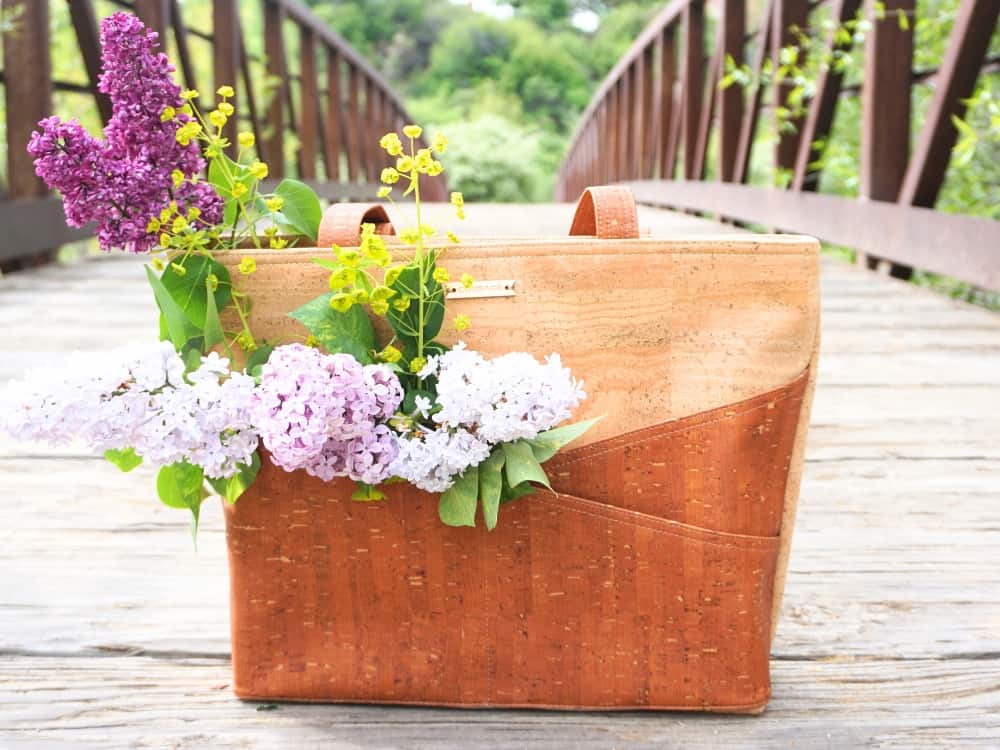
What Is Cork Leather & Is It Sustainable?
When it comes to sustainable fabrics, our faves are those that—like the Lorax—speak for the trees.
So what better choice than a fabric that actually comes from them?
We’re talking cork leather fabric.
But is cork the sustainable vegan leather we’ve been led to believe it is, or are ethical fashionistas barking up the wrong (cork) tree?
No (fo)rest for the wicked as we pop the cork on this trendy, tree-based material.
The Full List Of Cork Material Sustainability Considerations
1. What Is Cork Leather?
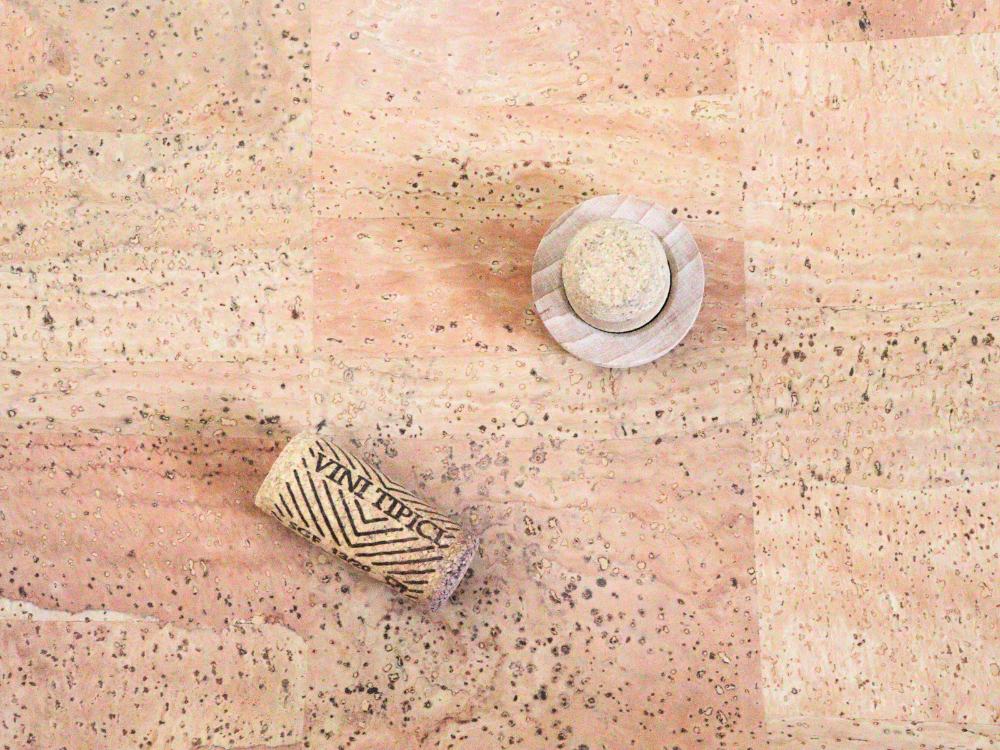
You may be well acquainted with it from your favorite bottle of Pinot Noir or the memo board to which you pin all your endless to-do lists.
Cork has been used for thousands of years for fishing tackle, cask stoppers, footwear, and building materials.
While humans have long been fascinated by this natural and handy material, using it as a pliable fabric is relatively new.
So, what is cork made of, exactly?
Natural cork fabric, also known as cork leather, is made from the bark of the cork oak tree, Quercus suber.
This evergreen tree is native to northwest Africa and southwest Europe, but Portuguese cork leather is the one you’re most likely to see. Portugal leads the world in cork production and is home to around 34% of the world’s cork trees.
Cork is used for all manner of things: flooring, insulation, wine bottle stoppers, eco-friendly yoga mats, and, increasingly, sustainable fashion items that trade animal hides for vegan fabrics—like sustainable wallets and ethical shoes.
2. How Is Cork Leather Made?
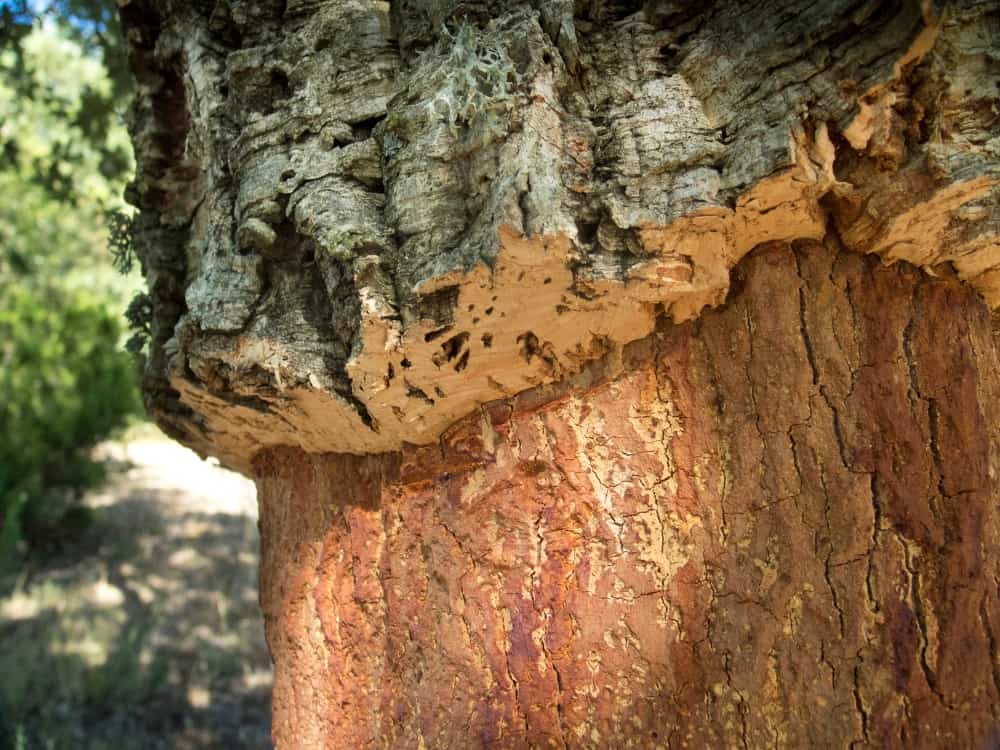
Cork leather starts with harvesting the cork. The outer section of the bark is manually stripped from the tree using a simple ax—no machines are required.
Since the outer bark can regenerate itself, this can be done without endangering the tree.
Once trees reach the age of twenty-five, bark harvesting can take place every 9 to 12 years. The average cork oak lives for two hundred years, so its bark can be sustainably harvested up to 16 times.
Once harvested, the cork is stacked in piles and left to dry for around six months before being submerged in boiling water to clean the cork and enhance its unique properties.
To produce cork leather, the cork is then cut into thin sheets, either dyed or left natural, then attached to a fabric backing (ideally cotton, but something polyester or polyurethane).
A fabric protection spray or sealant may be used to provide stain resistance. However, due to cork’s natural water-resistant properties, this isn’t unnecessary and can affect the material’s biodegradability.
3. Is Cork Sustainable?
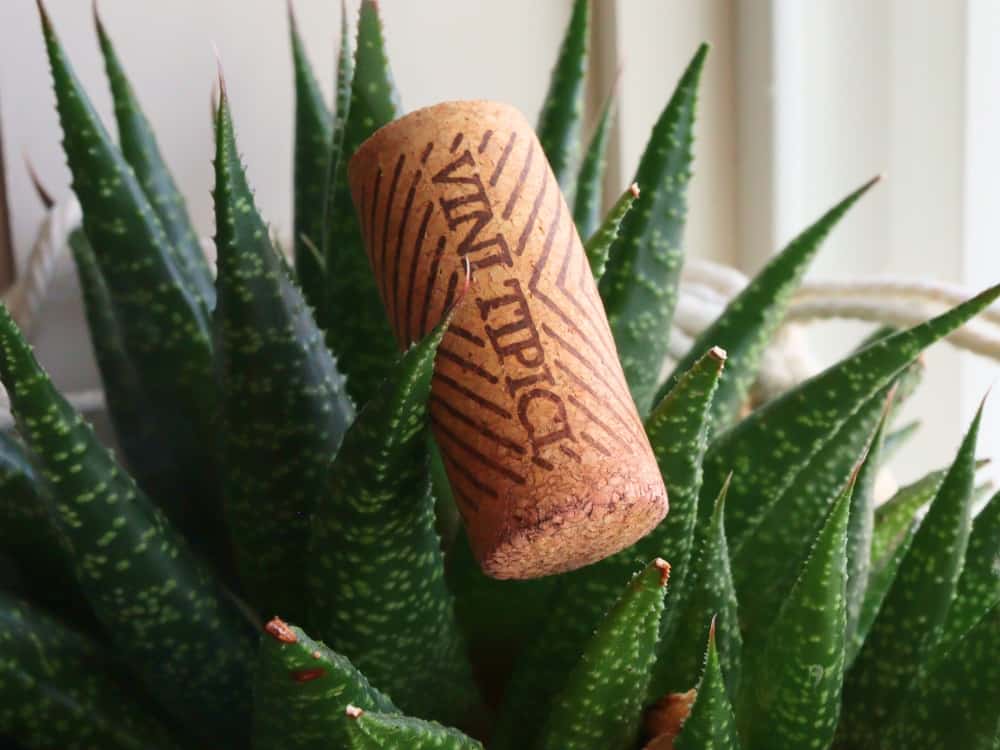
Carbon Sequestration
As with most tree-based materials, cork’s ability to remove and store carbon dioxide from our atmosphere is a major benefit.
Unlike timber harvesting, cork harvesting doesn’t require tree felling, so carbon sequestration can continue.
In fact, it sequesters up to five times more carbon than usual while its bark regenerates.
Biodiversity
Cork oaks are found in regions with high levels of biodiversity.
Portugal’s cork forest, for example, provides a home for the Iberian lynx, the world’s most critically endangered cat.
When cork oak forests are properly managed, we can harvest cork leather fabric in a way that preserves the trees themselves and increases biodiversity.
Cork forests are not always properly managed, though. To put a stopper in unsustainable harvesting practices, we need to look for details about sourcing, ideally from sustainable forestry certified sources.
Minimal Processing
Unlike animal leather, cork leather requires no tanning, finishing, or additives.
There is limited waste during extraction and processing, and any scraps can be turned into products for other industries.
Wastewater from production remains free from pollutants, unlike that from leather production, which can be contaminated with toxic chemicals like cyanide and chromium from the tanning process.
Biodegradability
Is cork biodegradable?
Natural cork material is 100% biodegradable and compostable. It can even be added to your compost bin!
However, this only applies to 100% natural cork. Watch out for fabric made from a cork/PU blend, as this is a different kettle of fish altogether.
For cork leather to be biodegradable, it must also be attached to a biodegradable backing and be free of chemical dyes and finishes.
Cork: A Sustainable Superstar
The environmental benefits of cork material are clear.
As a renewable resource, it sequesters carbon and provides crucial wildlife habitat, provided cork forests are sustainably managed.
Material from cork plant bark is vegan, and its production causes far less environmental harm than leather.
The sustainability of the end product depends on the use of 100% natural cork (not a cork/PU blend), as well as the backing material and fabric finishing processes.
If combined with another sustainable material, like organic cotton, and no toxic dyes or finishes have been applied, cork maintains its natural biodegradability and is one of the most sustainable materials available.
4. Cork Material Properties & Care
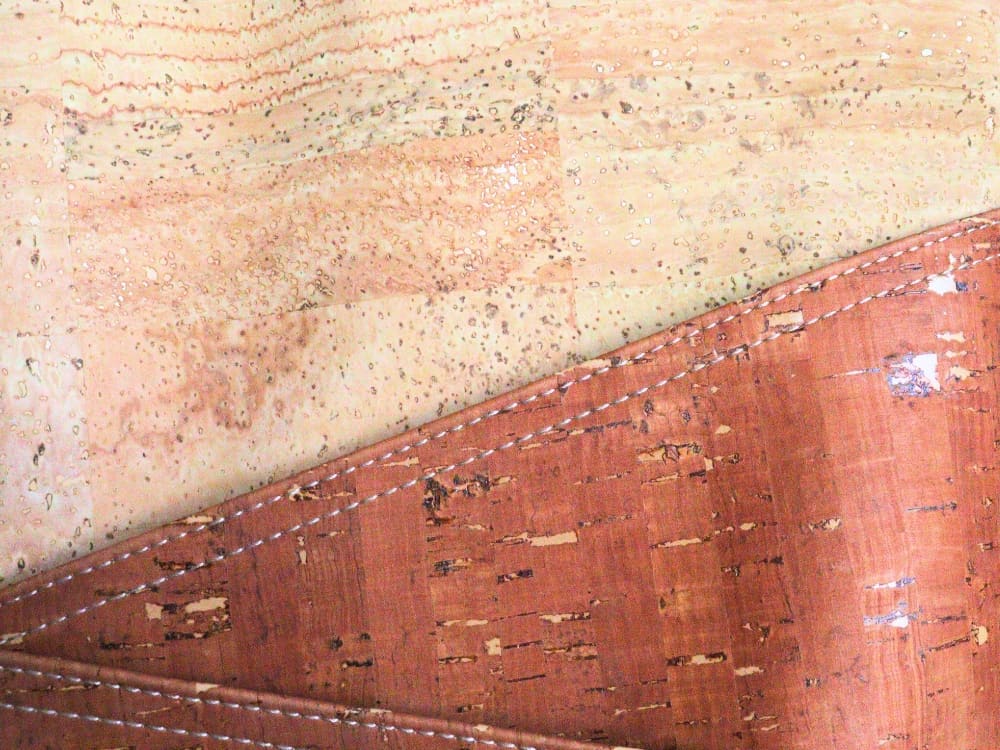
Cork’s main properties are why it’s found in both wine bottles and wallets: It’s lightweight and relatively elastic.
The spongy material floats, doesn’t burn, and is stain- and scratch-resistant.
It also contains suberin, a wax-like material that repels water and contributes to cork’s durability as a material for use in high-wear accessories like sustainable sandals to vegan handbags, but users should still take extra care to keep it in tip-top shape:
- Keep it clean! The best way to care for your cork shoes or handbag is to keep them clean.
- When necessary, spot-treat using a damp cloth and gently rub until the dirt or stain disappears. Putting cork items in the washing machine isn’t recommended.
- For a larger mess (like when your organic lipstick cap comes off in your purse), find comfort in the fact that cork is waterproof and can be immersed in warm water for a gentle wash with (ideally) zero waste dish soap.
- Leave out to air dry, and you’re good to go!
5. Cork Leather Vs. Other Plant-Based Vegan Leathers
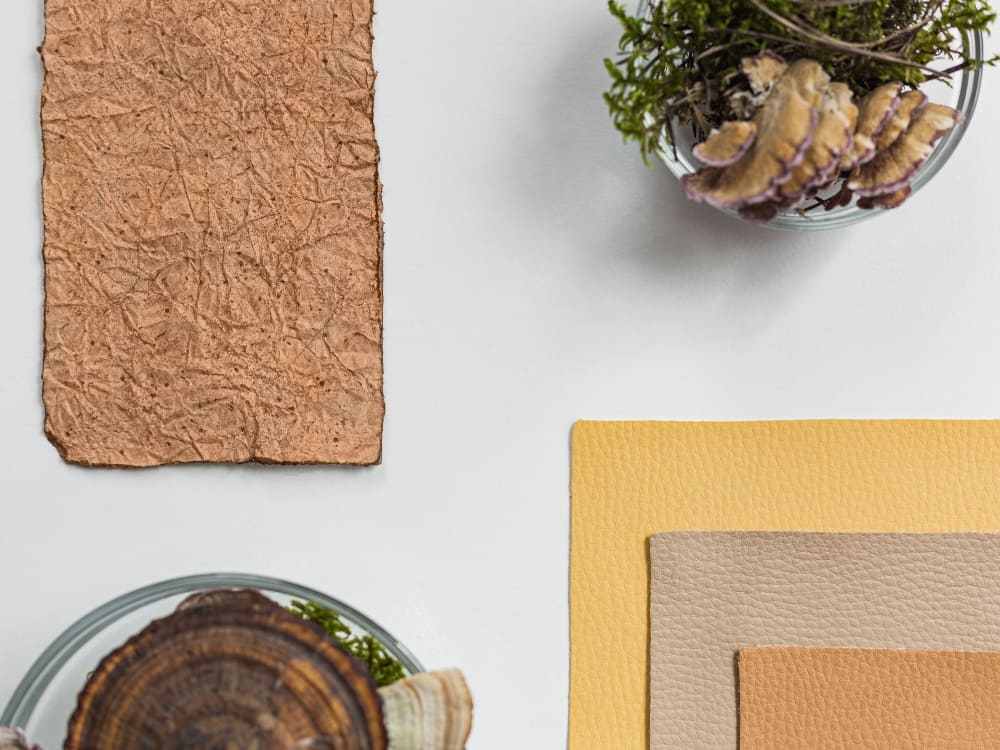
Vegan cork leather is obviously an excellent sustainable leather alternative.
It’s also a far better choice than plastic-based leathers like PU and PVC, but how does it stack up against other plant-based leathers?
Cork Leather vs. Piñatex
Produced by Ananas Anam, Piñatex is a popular leather alternative made from waste pineapple leaf fiber.
Unlike cork fabric, it’s not a completely natural material. It’s made with a blend of 80% pineapple leaf fibers and 20% PLA (polylactic acid) fibers, a bio-based plastic made from cornstarch.
It’s also coated with a REACH-compliant, water-based PU resin.
According to Ananas Anam, “the substrate/base material of Piñate is biodegradable under controlled industry conditions.”
Cork Leather vs. Apple Leather
Another food industry byproduct, Frumat’s apple leather, known as AppleSkin™, is another leather alternative used by sustainable fashion brands.
Again, it’s not a completely natural product. 50% apple waste is mixed with 50% PU and backed with cotton/polyester.
While this is a clear improvement on 100% PU leather alternatives, it’s not as sustainable as cork fabric.
Cork Leather vs. Cactus Leather
Another prickly plant-based material, cactus leather, is 90% bio-based.
Again, the added polyurethane inhibits biodegradability, although its manufacturer, Desserto, uses biodegradable polyurethane and organic dyes, and the resulting fabric is free of toxic chemicals.
Desserto also has an impressive array of eco-credentials, including Global Recycled Standard (GRS), ISO 9001 OEKO-TEX, PETA-approved vegan, USDA Organic, and USDA Biobased.
The sustainability of cactus leather also varies depending on the backing material used. Desserto uses some GRS-recycled content, including recycled cotton, polyester, and nylon.
6. Brands Using Cork Leather
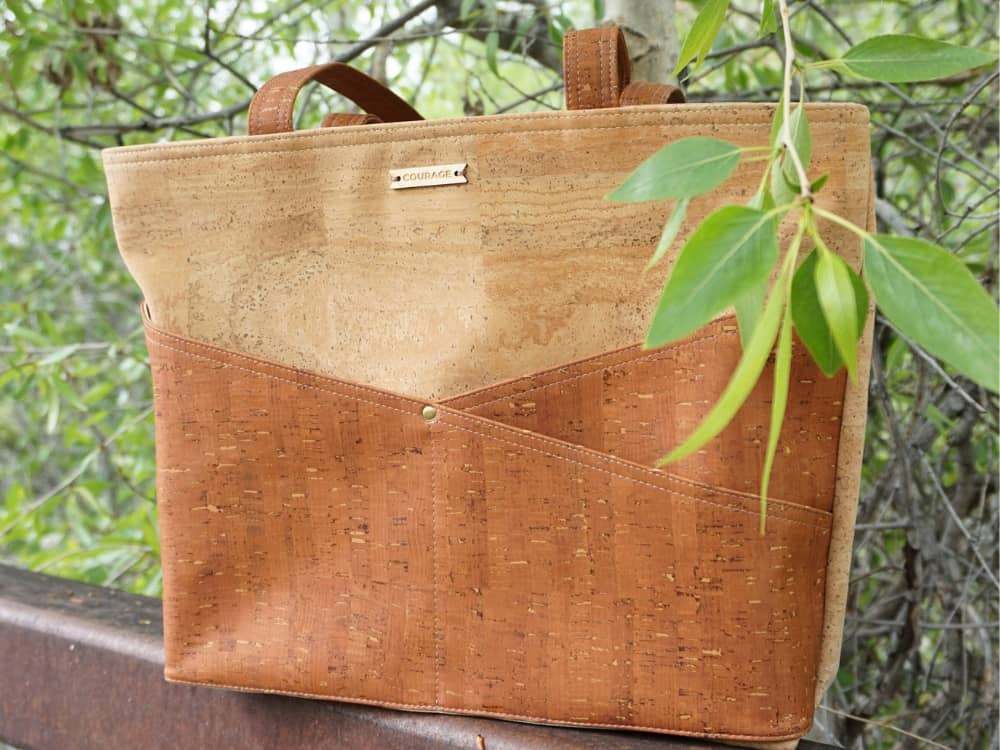
In the world of sustainable fashion, cork is in.
More and more brands are turning tail and running from environmentally damaging and inhumane animal leather for cruelty-free cork.
Here are a few cork connoisseurs to get you started:
- Carry Courage crafts its PETA-approved sustainable bags and purses from buttery-soft cork fabric sourced from sustainable forests and lined with organic cotton.
- Los Angeles-based brand Svala adds Portuguese cork fabric to its sustainable fabric repertoire. Their elegant cork bags, clutches, purses, totes, and wallets feature recycled polyester and organic cotton linings.
- Portugal-based NAE (short for “No Animal Exploitation”) offers a collection of stylish and minimalist cork shoes and sandals. The uppers are made from laminated cork backed with cotton.
- Wearables aside, Scoria offers a range of cork and natural rubber-based non-toxic yoga mats and accessories.
Did you know we Have a Newsletter?
We cover the latest in sustainable living, fashion, zero waste, beauty, travel, finance and more…
Final Thoughts On What Is Cork Fabric?
Shall we pop a bottle of champagne to celebrate sustainable cork fabric?
We think so.
It removes carbon dioxide from our atmosphere, can be harmlessly harvested, and makes for a great animal-free and plastic-free alternative to leather.
Just be aware that cork can sometimes be backed, blended, or treated with unsustainable materials, so check with the brand if unsure.
If you’re experiencing tre(e)mendous joy after discovering cork, share this article and help spread the word about this corker of a sustainable fabric.
Pin these:
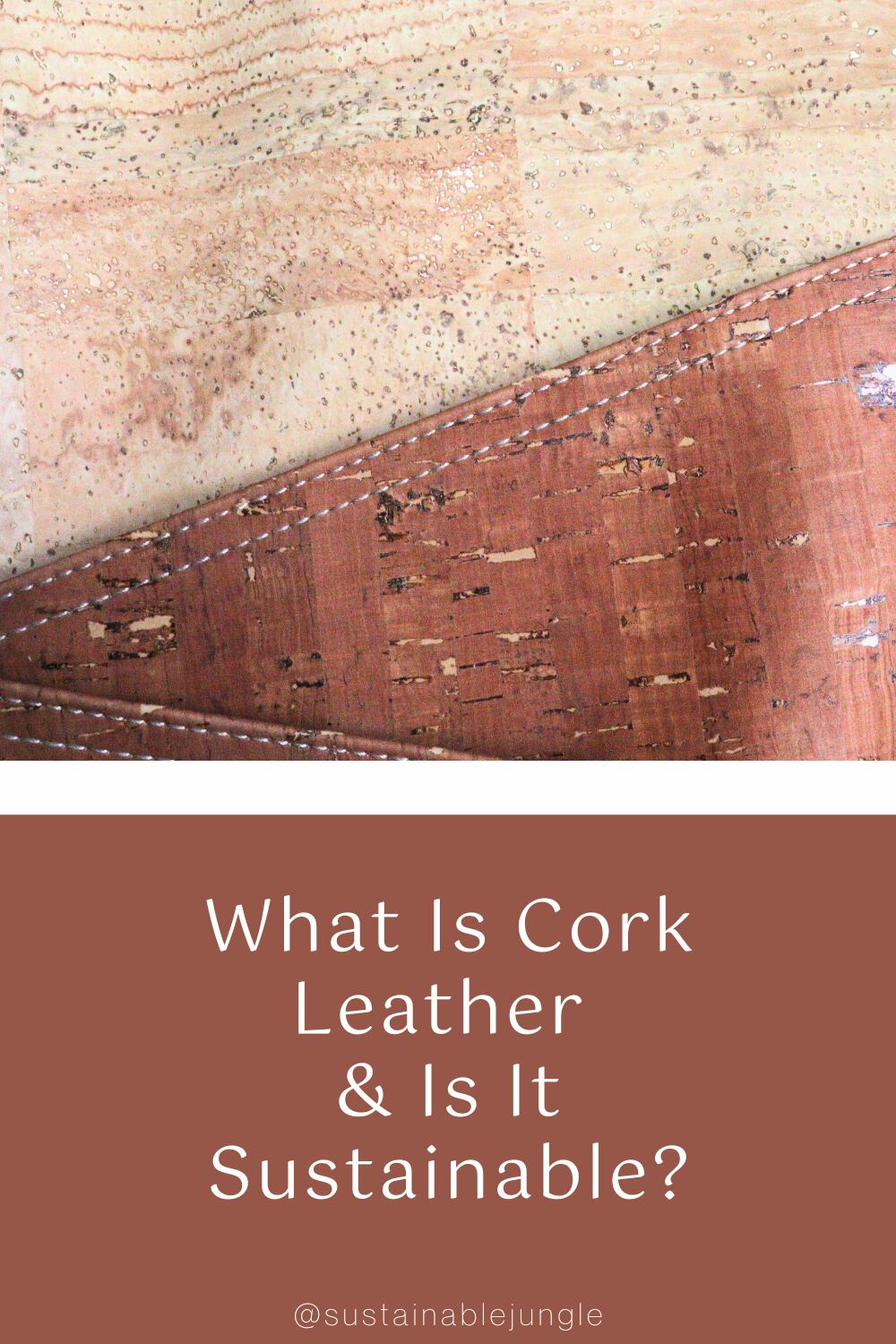
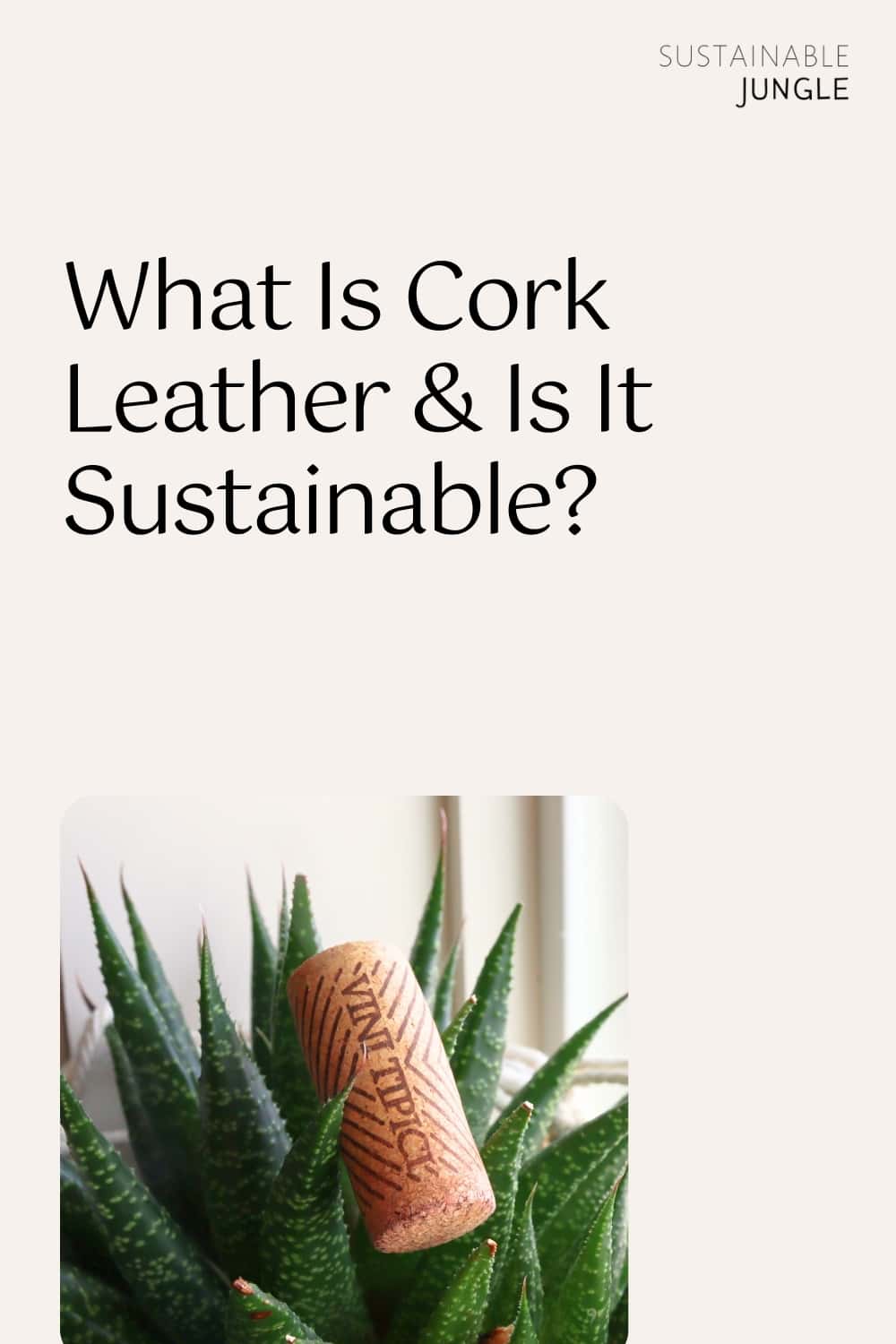




It’s eco-friendly in theory, but cork fabric is typically glued to some form of backing, usually polyester, polyurethane, or cotton. So it depends on what the backing is and what the glue is made from.
A very good point Misty. Like anything it’s important to think about the bigger picture when it comes to sustainability.
Some of the cheaper stuff seems to have a very fibrous nature, suggesting that it may be like ‘genuine leather’: offcuts, shavings and sawdust stuck back together with some form of glue – the equivalent of mdf for cork. Especially suspicious of the type with gold flecks, which obviously did not come from the original tree, and is most likely a plastic addition.